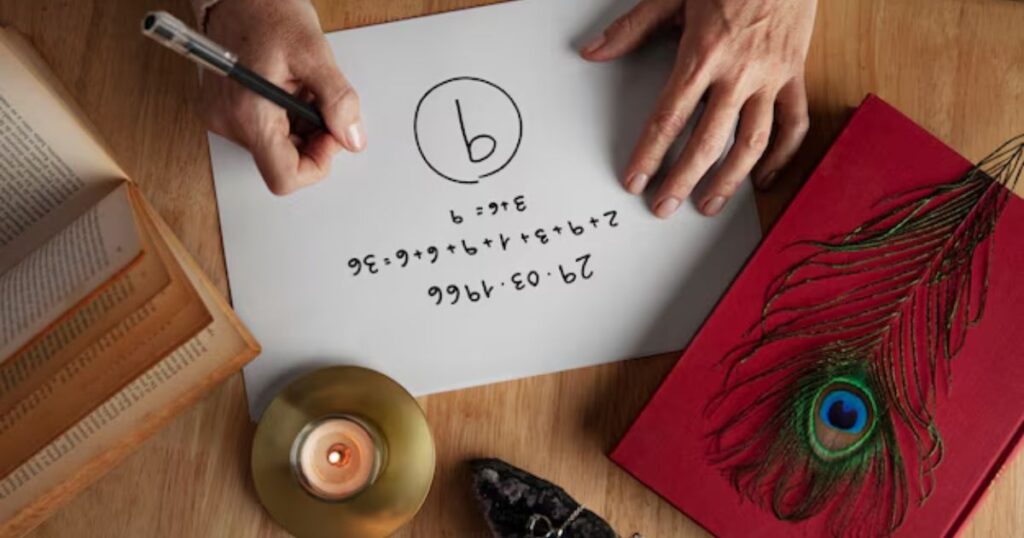The question “What does God look like?” has been asked by believers and seekers alike for centuries. In Christianity, God is often understood as spirit, and His true form is beyond human comprehension. While the Bible doesn’t describe God’s physical appearance in detail, it teaches that we are made in His image, meaning we reflect His character and essence. The concept of what God looks like is more about His nature and how He reveals Himself rather than His physical form.
When we explore what God looks like, it’s essential to focus on His attributes, such as love, justice, mercy, and holiness. The true image of God is not found in a physical representation but in the way He interacts with His creation. As we grow in our relationship with God, we come to understand what God looks like through His actions, teachings, and presence in our lives.
What Does God Look Like?

The question “What does God look like?” has intrigued believers and seekers for centuries. In Christianity, God is understood as a spirit, and His true form goes beyond human comprehension. The Bible does not give a physical description of what God looks like, but it emphasizes that we are made in His image. So, what does God look like? It’s not about His outward appearance but about reflecting His divine nature and spiritual qualities.
While the Bible doesn’t give us a clear answer to “What does God look like?” in a physical sense, it does reveal God through His actions and presence. In the Old Testament, God appeared as a cloud, fire, or in other symbolic forms. These appearances give us a sense of God’s majesty and power but don’t tell us exactly what God looks like in terms of physical form. What God looks like is shown through His influence on the world and His interactions with His people.
When we consider what God looks like, we must remember that He created humanity in His image. This doesn’t mean that we look exactly like God, but that we reflect His character. As we seek to understand what God looks like, we realize that His image is not a physical one but a spiritual and moral likeness that is seen in our actions and relationships. The more we reflect God’s qualities, the closer we come to understanding what God looks like.
In the person of Jesus Christ, we get a more tangible picture of what God looks like. Jesus, as the Son of God, embodies the nature of God. He shows us that God looks like love, compassion, and forgiveness. Through Jesus’ life, we see God’s heart for humanity healing the sick, showing mercy to sinners, and teaching about God’s kingdom. Jesus provides the clearest example of what God looks like in the way He lived and interacted with others.
Ultimately, the question of what God looks like is not about physical features, but about understanding His divine essence. By looking at Jesus and reflecting on His teachings, we gain a deeper understanding of what God looks like spiritually. It’s through our relationship with God and our experiences of His presence that we can truly discover what God looks like in our lives.
Related Guide:
INRI Meaning and Significance: The Crucifixion Code Unveiled
Ezekiel’s Vision
Ezekiel’s vision offers a powerful glimpse into what God looks like, though it is not a clear physical description. In Ezekiel 1, the prophet sees a storm cloud filled with fire and flashes of lightning, accompanied by four living creatures. These creatures reflect different aspects of God’s divine nature, giving us a sense of what God looks like spiritually. The focus is not on a physical form but on the overwhelming glory and power of God.
The next part of the vision reveals a throne made of sapphire, with a figure seated upon it, radiating like glowing metal. This scene provides an idea of what God looks like in His divine and radiant form. What does God look like in this vision isn’t a human shape but a manifestation of His holiness and majesty. It conveys the awe-inspiring nature of God’s presence.
Ezekiel also describes four living creatures with the faces of a lion, an ox, an eagle, and a man. This gives us a deeper understanding of what God looks like spiritually. The creatures symbolize different attributes of God’s nature, strength, wisdom, sovereignty, and authority. This helps us understand that what does God look like is beyond any earthly form, emphasizing the fullness of God’s divine essence.
In Ezekiel’s vision, the wheels within wheels represent the omnipresence and movement of God. What does God look like here shows that His presence isn’t confined to one place but extends throughout creation. The wheels represent that what does God look like is a dynamic force, always active and moving, spreading His presence across the entire universe.
The vision underscores that what God looks like is more about spiritual presence than physical appearance. The light, fire, and throne represent God’s glory and holiness. What does God look like is a reflection of His infinite power and divine nature, which cannot be captured by human perception but must be felt spiritually.
In conclusion, Ezekiel’s vision helps us grasp what God looks like in a spiritual sense. The fire, light, throne, and living creatures all point to God’s immeasurable glory and power. What does God look like isn’t defined by a physical shape but by His divine nature, radiating holiness and majesty. Through this vision, we learn that what God looks like is beyond comprehension, a divine presence that fills us with awe.
John’s Revelation
In John’s Revelation, the apostle shares a powerful vision of what God looks like in His heavenly realm. In Revelation 4, John describes a throne in heaven with someone seated upon it, surrounded by light and precious stones. This scene emphasizes the divine and glorious nature of what God looks like, portraying God’s holiness and majesty beyond human comprehension.
John also describes a rainbow around God’s throne that appears like an emerald, highlighting the beauty and grandeur of what God looks like. The focus is not on physical features but on the overwhelming radiance and splendor of God’s presence. What God looks like in this vision speaks to His eternal glory, which surpasses any earthly understanding.
The twenty-four elders fall down before God’s throne, worshiping and acknowledging God’s sovereignty. This demonstrates that what God looks like is an awe-inspiring sight, deserving of all honor and praise. The elders’ reaction shows that what God looks like evokes deep reverence and worship.
In the vision, John also sees four living creatures who are full of eyes and constantly praising God. These creatures represent God’s perfect creation and point to what God looks like in His all-knowing, omnipresent form. What God looks like here is a symbol of His eternal and infinite nature.
Understanding Symbolism

In both Ezekiel’s vision and John’s Revelation, the symbolism helps us understand what God looks like beyond a physical form. These visions are filled with symbols such as light, fire, and thrones, each pointing to different aspects of God’s nature. These symbols are not meant to describe what God looks like physically but rather to communicate His divine attributes like power, holiness, and majesty.
For example, the throne in both visions represents God’s sovereignty. What God looks like in these visions isn’t a simple physical appearance but a divine presence that rules over all creation. The throne symbolizes God’s authority, and the radiant light surrounding it symbolizes His holiness and purity, showing that what God looks like is beyond our earthly comprehension.
The living creatures in the visions also carry deep meaning. They symbolize the fullness of God’s creation and His eternal presence. What God looks like in this context reflects His omnipresence and omniscience, suggesting that His divine nature is all-encompassing and not limited to any one form. These creatures are reminders that what God looks like is rooted in His infinite wisdom and power.
Finally, the rainbow and other symbols highlight God’s promises and faithfulness. What God looks like through these symbols is a reflection of His love and commitment to His people. These images convey that God’s presence isn’t just about physical sight but about experiencing His divine glory, majesty, and grace. Through symbolism, we gain deeper insight into what God looks like in His spiritual form.
Why This Matters
Understanding what God looks like through visions such as those in Ezekiel and John helps us recognize the depth of His holiness and grandeur. These symbolic depictions are not meant to provide a literal image but rather to reveal the divine qualities of God His majesty, power, and purity. They help us grasp what God looks like in a spiritual sense, reminding us of His supreme authority over all creation.
Reflecting on what God looks like also strengthens our relationship with Him. The symbols in these visions deepen our understanding of His eternal nature and encourage us to respond in awe and worship. By contemplating what God looks like, we are reminded of His constant presence in our lives and are inspired to draw closer to Him in faith and reverence.
Think About It
What God looks like isn’t limited to physical form but is reflected through divine symbols of holiness and power.
These symbols show us what God looks like spiritually, pointing to His majesty and glory beyond human understanding.
What God looks like is more than just a physical appearance; it’s a spiritual reality that is symbolized in visions.
These divine symbols reveal God’s holiness, power, and authority, offering a glimpse of what God looks like in His true glory.
Reflecting on these symbols helps us understand that God’s presence is far greater than anything we can physically see.
FAQ’s
What is God looking like?
What God looks like is not a physical form but is symbolized through divine visions, reflecting His holiness, power, and eternal glory. Understanding what God looks like helps us appreciate His spiritual presence.
What is the image of God like?
The image of God is not a physical appearance but is symbolized by divine visions that convey His holiness, power, and majesty. This is what God looks like in a spiritual sense.
What is God seen as?
What God looks like is seen through symbolic visions that reflect His holiness, power, and divine glory. These images help us understand what God looks like spiritually, beyond physical form.
What does the eye of God look like?
The eye of God is often symbolized as all-seeing, representing His omnipresence and divine awareness. This is part of what God looks like in His infinite knowledge and power.
What is God’s eye’s real name?
The concept of God’s “eye” represents His omnipresence and all-seeing nature, but it doesn’t have a specific “real name.” This is part of what God looks like in His divine understanding and awareness.
Conclusion
Understanding what God looks like is a profound spiritual journey. Rather than focusing on physical appearances, the Bible offers us symbols and visions to reveal His holiness, power, and majesty. Reflecting on what God looks like helps deepen our faith and reminds us of His infinite presence.
By exploring divine imagery and descriptions, we can gain insight into what God looks like in a spiritual sense. These symbols inspire awe and help us connect with God’s eternal glory. What God looks like is not limited to human understanding, but His essence is seen in love, justice, and grace.

With five years of experience as a content writer, I specialize in creating engaging website content that drives traffic and builds brand loyalty. My expertise lies in crafting clear, compelling narratives that connect with audiences and optimize for search engines. I’m passionate about helping businesses articulate their unique value through well-researched blog posts, persuasive web copy, and impactful social media content. My goal is to transform ideas into captivating stories that not only inform but also inspire action.







